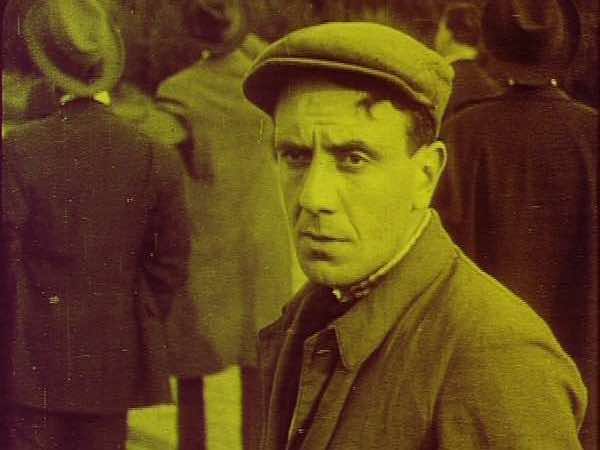IL FIACRE N. 13
Alberto A. Capozzi, Gero Zambuto (IT 1917)
Not many Italian silent films structured in episodes have survived, though a good many were made (see Monica Dall’Asta, “La diffusione dei film a episodi in Europa”, in Storia del cinema mondiale. Vol. 1: L’Europa. I. Miti, luoghi divi, Einaudi, 1999, p.309). Most of them were based on foreign models, particularly French, and some were direct reworkings. One such case is Il Fiacre n. 13, from the novel of the same title by Xavier Henri Aymon Perrin, Count of Montépin, a highly prolific and much-loved author whose books were vehicles for the depiction of social inequality, narrating stories of love, death, betrayal, blackmail, and redemption. The sweeping narrative of Il Fiacre n. 13 was mutilated by the Italian censor’s suppression of its first part, the most cynical episode, which sets the scene for a scheme discernable in the other three episodes, as the story develops from a sordid murder through plotting and deceit to finally reach a happy ending. The banned Episode 1, Il delitto al Ponte di Neuilly (Murder at the Neuilly Bridge), was thus originally only seen abroad, and has been reconstructed for this version, the rest of which is as close to the original release as possible (obtained from a 1947 deposit by Luigi Comencini). Episode 2, Gian Giovedì, the name of the apache character, a career criminal with a soft heart, leads to Episode 3, La figlia del ghigliottinato (The Daughter of the Guillotined Man), the grimmest episode, where evil seems to prevail, until Episode 4, Giustizia!, brings final justice. Like the continuing practice of television soap operas the world over, the narrative is an unending series of dramatic revelations, where events are carefully illustrated and explained by the intertitles, which, as with all films of this type, bear witness to the style of the material’s direct literary origins. The characters’ psychological profiles are substantially also stock, based principally on the physical presence of Alberto Capozzi (who co-directed with Gero Zambuto), Elena Makowska, and, above all, a sorrowful Gigetta Morano. In an anonymous Paris (actually Turin), the settings are convincing, particularly in interior scenes, unless they appear in contrast to the more sumptuous sets, which seem over-produced. Giovanni Vitrotti’s masterful camerawork is in evidence, and the images are tastefully tinted. There are some jolts of style: the juxtaposition of shots from above, panoramas, and tracking shots seem to confirm Alberto Capozzi’s penchant for experimentation.
Carlo Montanaro

4 episodi/episodes: I. Il delitto al Ponte di Neuilly; II. Gian Giovedì; III. La figlia del ghigliottinato; IV. Giustizia!
sogg/story: “Le Fiacre no. 13”, di/by Xavier de Montépin (1881), adapt. Giuseppe Paolo Pacchierotti.
photog: Giovanni Vitrotti.
cast: Alberto A. Capozzi (Gian Giovedì, l’apache/the apache), Elena Makowska (Claudia Varny), Gigetta Morano (Berta Leroyer, la figlia del ghigliottinato/daughter of the guillotined man), Fernanda Negri-Pouguet (la demente/the madwoman), Cesare Gani Carini (Renato Moulin), Vasco Creti (duca/Duke George de Latour), Umberto Scalpellini (il vetturino/the coachman), Diana Karenne.
prod: Ambrosio (Torino).
riprese/filmed: 1916-1917.
copia/copy: 35mm, 3500 m., 170′ (18 fps); did./titles: ITA.
fonte/source: Cineteca Italiana, Milano.


 Italiano
Italiano